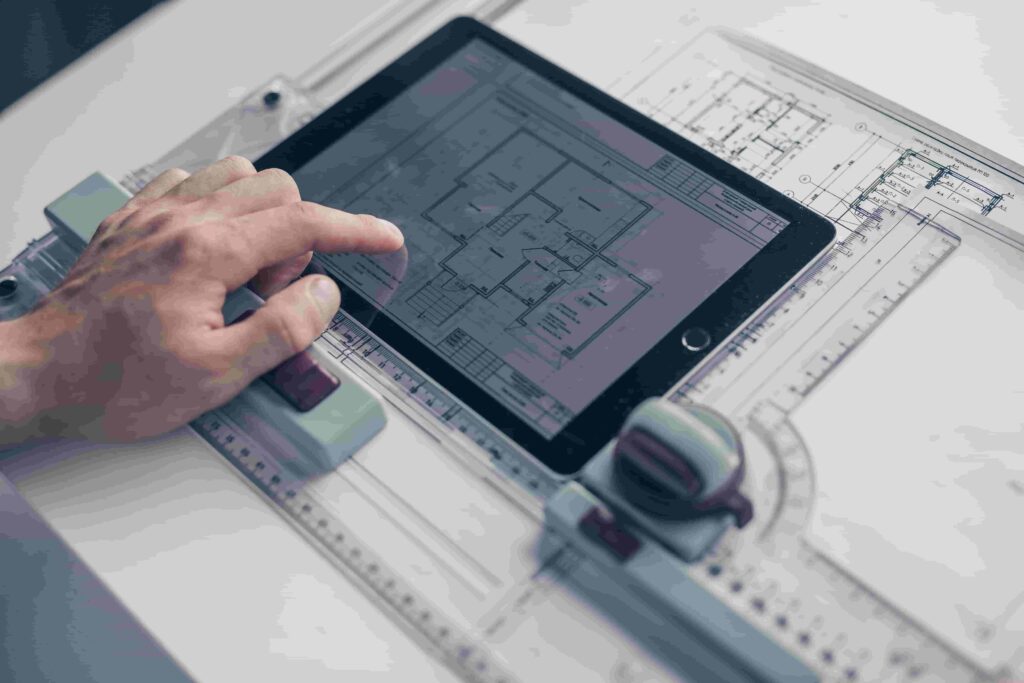
In modern construction estimating, a PDF plan takeoff is a streamlined method for measuring and quantifying project elements directly from digital drawings. This process eliminates the need for paper plans and manual scale rulers, offering accuracy, efficiency, and better integration with estimating software.
At True Bid Data, we specialize in transforming PDF drawings into structured quantity data that fuels precise, competitive bids.
Why PDF Plan Takeoff Matters
For contractors, estimators, and project managers, a PDF plan takeoff is more than just a measurement task—it’s the foundation of cost accuracy. By extracting detailed quantities directly from digital plans, you:
- Eliminate manual calculation errors
- Speed up the estimating process
- Maintain clear, shareable digital records
- Easily incorporate design revisions without starting from scratch
This approach aligns perfectly with fast-paced bidding environments where every minute counts.
How PDF Plan Takeoff Works
A typical PDF plan takeoff involves:
- Importing the PDF: Plans are loaded into takeoff software for measurement.
- Calibrating the Scale: Ensuring accurate measurements by matching the drawing’s scale.
- Highlighting Elements: Marking walls, doors, finishes, MEP systems, and site work components.
- Measuring Quantities: Using digital tools to measure lengths, areas, and counts.
- Exporting Data: Converting takeoff results into structured formats for pricing and scheduling.
Benefits Over Manual Takeoffs
- Speed – A PDF takeoff is significantly faster than measuring from printed plans.
- Accuracy – Software ensures consistent scaling and reduces human error.
- Collaboration – Digital files can be shared and reviewed in real-time with teams.
- Revision Handling – Changes in the design can be updated instantly without redoing the entire takeoff.
True Bid Data leverages these benefits to help clients meet tight deadlines without sacrificing detail.
Common Challenges in PDF Plan Takeoff
Even with technology, PDF plan takeoffs come with challenges:
- Low-Resolution Files – Poor quality drawings can impact measurement accuracy.
- Unlabeled Scales – Missing scale information requires careful calibration.
- Multiple Drawing Versions – Ensuring you’re working on the latest version is critical.
- Complex Layering – MEP overlaps with architectural elements can make items harder to identify.
We use a structured review process to mitigate these issues, ensuring clean, reliable data output.
Data Insights from PDF Takeoffs
A PDF plan takeoff is not just about measurements—it’s about turning drawings into insights. With the right approach, you can:
- Identify high-cost materials and explore alternatives
- Understand labor implications for each trade
- Forecast potential cost risks from design complexity
- Produce trade-by-trade breakdowns for subcontractor quotes
The True Bid Data Approach
Our PDF plan takeoff services are built on:
- Accuracy – Every measurement is verified for scale and clarity
- Speed – We deliver fast turnarounds for time-sensitive bids
- Integration – Takeoffs link directly to cost databases for real-time estimating
- Detail – Every material, dimension, and component is accounted for
By combining digital takeoff tools with real-world construction knowledge, we give our clients an edge in competitive bidding.
Streamline Your PDF Plan Takeoffs with True Bid Data
Whether you’re an estimator, GC, or subcontractor, PDF plan takeoffs can save you time and improve your cost accuracy. At TrueBidData.com, we transform your drawings into precise, actionable data—helping you bid smarter and build with confidence.
Visit True Bid Data to modernize your takeoff process today.




